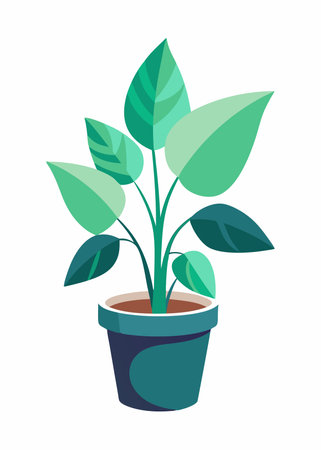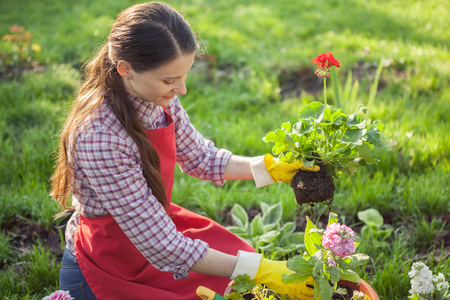1. Introduction to Garden Insects
When it comes to gardening in the United States, insects are an everyday part of the landscape. Whether youre growing vegetables in your backyard or tending to a flower bed, youre bound to encounter a wide variety of bugs. While some insects may damage your plants, others actually help your garden thrive. Understanding the difference between beneficial and harmful insects is key to maintaining a healthy and productive garden.
The Role of Insects in American Gardens
Insects play many important roles in U.S. gardens. Some act as pollinators, helping flowers and crops reproduce. Others serve as natural pest control by feeding on harmful bugs. However, there are also insects that chew on leaves, suck sap from stems, or spread diseases, which can cause serious damage to your plants.
Beneficial vs. Harmful Insects
Its helpful to know which insects are friends and which are foes. Heres a simple comparison:
| Type of Insect | Examples | Role in the Garden |
|---|---|---|
| Beneficial Insects | Ladybugs, Bees, Praying Mantises, Lacewings | Pollinate plants, eat pests like aphids and mites |
| Harmful Insects | Aphids, Japanese Beetles, Tomato Hornworms, Squash Bugs | Feed on plant parts, spread disease, reduce crop yield |
Why Identification Matters
Knowing which insects are in your garden helps you make smart decisions about pest control. You don’t want to accidentally remove helpful bugs while trying to get rid of the bad ones. By learning how to identify common garden insects in the U.S., you can better protect your plants and even encourage beneficial species to stick around.
This guide will walk you through identifying common garden insects found across different regions of the United States so you can keep your garden thriving all season long.
2. Common Beneficial Insects
Not all insects are bad for your garden. In fact, many bugs play an important role in keeping your plants healthy and thriving. These beneficial insects help control pests naturally, pollinate flowers, and improve the overall ecosystem of your garden. Here are a few helpful insects commonly found in U.S. gardens:
Ladybugs (Lady Beetles)
Ladybugs are one of the most well-known beneficial insects. They are easily recognized by their red or orange shells with black spots. Both adult ladybugs and their larvae feed on soft-bodied pests like aphids, mites, and scale insects.
Identification Tips:
- Color: Red, orange, or yellow with black spots
- Size: About 1/4 inch long
- Shape: Dome-shaped body
Benefits:
- Control of aphids and other sap-sucking pests
- Non-destructive to plants
Lacewings
Lacewings may look delicate, but their larvae are fierce predators of many common garden pests. Adult lacewings are green or brown with large, transparent wings that have a lace-like appearance.
Identification Tips:
- Color: Green or brown
- Wings: Clear with fine veins (lace-like)
- Larvae: Alligator-shaped, often called “aphid lions”
Benefits:
- Larvae feed on aphids, thrips, whiteflies, and small caterpillars
- Help reduce pest populations without chemicals
Honeybees
Honeybees are essential for pollination. While they don’t eat pests like ladybugs or lacewings, they play a crucial role in helping fruits, vegetables, and flowers reproduce.
Identification Tips:
- Color: Golden-yellow with brown or black bands
- Hairy bodies that help collect pollen
- Often seen moving from flower to flower during daylight hours
Benefits:
- Pollinate crops such as tomatoes, cucumbers, berries, and squash
- Support biodiversity and healthy plant growth
Quick Reference Table
| Insect | Appearance | Main Benefit |
|---|---|---|
| Ladybug | Dome-shaped; red/orange with black spots | Eats aphids and soft-bodied pests |
| Lacewing | Lacy wings; green/brown color; larvae look like tiny alligators | Pest control (especially aphids) |
| Honeybee | Golden-yellow with black stripes; fuzzy body | Pollination of fruits and vegetables |
If you spot any of these friendly bugs in your garden, give them a warm welcome—theyre hard at work helping your plants thrive!

3. Common Garden Pests
When it comes to keeping a healthy and thriving garden in the U.S., knowing which bugs are friends and which are foes is essential. Some insects can seriously damage your plants if left unchecked. In this section, we’ll help you identify some of the most common destructive garden pests found across the United States.
Aphids
Aphids are tiny, soft-bodied insects that come in green, black, red, or white. They usually gather on the underside of leaves and around new plant growth. These pests suck sap from plants, causing leaves to curl, yellow, or drop prematurely.
How to Spot Aphids
- Clusters of small insects on stems or under leaves
- Sticky substance (called honeydew) on leaves or nearby surfaces
- Ants crawling on plants (they’re attracted to the honeydew)
Japanese Beetles
Japanese beetles are metallic green with copper-colored wings. Though they look pretty, these beetles are notorious for skeletonizing leaves—eating all the leaf tissue between the veins—and damaging flowers and fruit.
How to Spot Japanese Beetles
- Beetles active during sunny parts of the day
- Leaves with only veins remaining (skeletonized appearance)
- Groups of beetles feeding together on foliage or blooms
Tomato Hornworms
These large green caterpillars are one of the most destructive pests for tomato plants. Tomato hornworms blend in well with plant stems but can eat entire leaves and even bore into fruit.
How to Spot Tomato Hornworms
- Large green caterpillars with white stripes and a horn-like tail
- Chewed leaves and missing stems on tomato plants
- Dark droppings (frass) around damaged areas
Pest Identification Quick Guide
| Pest | Appearance | Signs of Damage | Common Host Plants |
|---|---|---|---|
| Aphids | Tiny, soft-bodied; green, black, red, or white | Curling/yellowing leaves; sticky honeydew; presence of ants | Roses, tomatoes, beans, lettuce, cucumbers |
| Japanese Beetles | Metallic green body with copper wings; about 1/2 inch long | Skeletonized leaves; flower damage; clusters of beetles feeding together | Roses, grapes, beans, raspberries, linden trees |
| Tomato Hornworms | Large green caterpillar with white stripes and a rear horn | Eaten leaves; chewed fruit; visible droppings on plants | Tomatoes, peppers, eggplants, potatoes |
Knowing what to look for is the first step in protecting your garden from these common pests. Regular monitoring and early detection can help you take action before major damage occurs.
4. Signs of Insect Infestation
Recognizing the early signs of insect damage in your garden can help you take action before the problem gets out of hand. Below are common symptoms to look for when checking your plants for pest issues.
How to Spot Insect Damage on Plants
Insects can cause a variety of visible effects on your plants. Here are some of the most frequent signs:
| Sign | Description | Possible Insect Culprits |
|---|---|---|
| Leaf Discoloration | Yellow, brown, or pale spots on leaves | Aphids, spider mites, whiteflies |
| Holes in Leaves | Irregular or round holes chewed through leaf tissue | Caterpillars, beetles, slugs |
| Stunted Growth | Plants not growing as expected; small or deformed leaves and stems | Aphids, root maggots, thrips |
| Sticky Residue (Honeydew) | A shiny, sticky substance on leaves or surrounding surfaces | Aphids, scale insects, whiteflies |
| Wilting Despite Watering | Leaves droop even when soil is moist | Root-feeding insects like grubs or weevils |
Check the Underside of Leaves
Many insects hide underneath leaves to avoid predators and direct sunlight. Be sure to inspect both sides of the foliage during your garden walk-throughs.
Look for Clusters or Colonies
Pests like aphids and whiteflies often appear in large numbers. Spotting clusters of tiny bugs on new growth is a clear sign of infestation.
Examine Buds and New Growth Closely
Younger parts of plants are especially vulnerable. Thrips and other small pests prefer tender shoots and buds, which can lead to distorted flowers or reduced fruit production.
Tip:
If you notice any unusual activity—like ants crawling up stems—it might indicate the presence of sap-sucking insects such as aphids that produce sweet honeydew attracting ants.
Regular Monitoring Makes a Difference
The best way to protect your garden is by staying observant. Weekly checks allow you to catch problems early and respond quickly before pests spread across multiple plants.
5. Natural and Integrated Pest Management Strategies
Managing pests in your garden doesnt have to mean reaching for chemical sprays. In fact, many gardeners across the U.S. are turning to natural and integrated pest management (IPM) strategies that are safer for people, pets, and the environment. These methods focus on prevention, observation, and using nature itself to maintain balance in your garden.
Companion Planting
Companion planting is a time-tested technique where certain plants are grown together to naturally repel pests or attract beneficial insects. Here are some common companion pairings used by gardeners in various regions of the U.S.:
| Plant | Companion | Pest Targeted |
|---|---|---|
| Tomatoes | Basil, Marigolds | Aphids, Whiteflies |
| Cabbage | Dill, Nasturtiums | Cabbage worms, Aphids |
| Carrots | Onions, Rosemary | Carrot flies |
Physical Barriers
Physical barriers can be an effective way to block pests without the use of chemicals. These techniques work well across different climates and regions of the U.S., from backyard gardens in California to raised beds in New England.
Common Types of Physical Barriers:
- Row Covers: Lightweight fabric that shields plants from insects while still letting sunlight and water through.
- Copper Tape: Used around garden beds or pots to deter slugs and snails.
- Collars: Cardboard or plastic collars placed around seedlings to prevent cutworms.
- Netting: Fine mesh netting can protect fruit trees or berry bushes from birds and larger insects.
Introducing Beneficial Insects
Naturally controlling pests with predator insects is one of the most sustainable ways to manage your garden ecosystem. Many beneficial bugs are native to different parts of the U.S., and they help keep pest populations in check without harming your plants.
| Beneficial Insect | Pests Controlled | Best Regions for Use |
|---|---|---|
| Lacewings | Aphids, Mealybugs, Thrips | Nationwide |
| Ladybugs (Lady Beetles) | Aphids, Scale Insects, Mites | Nationwide |
| Praying Mantises | Caterpillars, Beetles, Flies | Southeast, Midwest |
| Parasitic Wasps | Caterpillars, Aphids, Whiteflies | Southern & Western States |
Additional Tips for Natural Pest Control
- Keep Your Garden Clean: Remove dead leaves and weeds that can harbor pests.
- Rotate Crops: Changing plant locations each season helps prevent soil-borne pests from building up.
- Select Resistant Varieties: Some vegetable varieties are bred to resist specific pests common in certain U.S. regions.
- Create Habitat for Predators: Grow flowering plants like yarrow or dill to attract helpful insects like hoverflies and parasitic wasps.
You don’t need harsh chemicals to enjoy a thriving garden. By combining these natural methods—tailored to your local climate and pest challenges—you can grow healthier plants while supporting biodiversity right in your own backyard.


